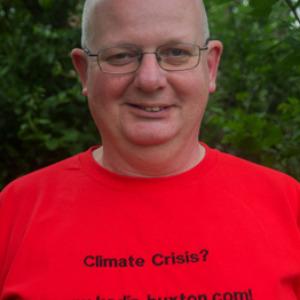Community Discussions
Reducing Carbon emmission through Aforestation
 Peter Odama Dec 21, 2018 01:34 | Uganda is at risk of Climate Change World Action Fund is looking for partners and donors to reverse this trend The recent studies conducted by Africa Natural Resources Institute indicate that forest cover loss has now increased to an estimated 200,000 hectares annually. The situation is being blamed partly on Uganda's booming population, which is growing at a rate of about 3.6% per annum. At that growth rate, by 2025 the population will almost be approximately to 63 million, close to that of Britain, which has a similar land mass where in 1950 UK had a population of approximately 50 million with an increment of 10 million in the year 2018 Population growth and migration has increased demand for agricultural land and firewood energy, and rural poverty restricts the ability to invest in sustainable land use practices. The population growth rate of 3.6% per anum leads to exerted high pressure on the forest resources in order to derive people’s livelihoods, higher population makes land for settlement and agriculture inadequate and consequently resort to the forest land. Therefore, deforestation is more in- tense in areas with high population densities. In districts such asnArua, Mukono, Mpigi and Luwero, major tracts of land have been cleared in the last decade. Much of this vegetation has secondary woody - Higher poverty levels over 46% of the people in Uganda live below the poverty line poor people are driven by the higher demand to sustain their livelihoods from the forest resources because they lack alternative sources of income as a consequence depletion of the forests become inevitable. Following the trends, Uganda may not have any forests left in the next 83 years due to high population growth unless serious interventions are executed not only by Ugandan Government but also International Community (UNEP- United Nations Environment Program to assist Uganda in implementing environmentally sound policies and best practices, and other relevant Agencies). Uganda is at risk of losing all its forests if deforestation in Uganda continues at its present rate there would be no forests left in 40 years. Other reasons of deforestation include: poor rural electrification and costly electricity which makes 89% of Ugandans to use firewood and charcoal as the main sources of fuel to cook. Large amounts of forests are also spent as trees are cut for timber and wood because the construction industry still greatly use timber rather than steel and other substitutes. The people in the rural areas are among the first hit by the environmental negative effect of deforestation which include climate change, soil degradation reduced biodiversity and loss of recreation. Degradation of water- shed areas is leading to deterioration of the quality of life and reduction of the options for development, Farmers are already struggling to adapt to the rapidly changing and increasingly erratic weather patterns since rain is not falling when it is supposed to and drought has left many farmers struggling to find enough food to feed their families. In many districts of Uganda e.g. Tororo, Iganga, Nakasongola, Arua, Soroti, Kumi,Palisa, Rakai, Ajumani, the declining forest cover has resulted in a fuel wood deficit hence rising costs and increased burdens on women and children who collect firewood. Therefore, if the situation is not reversed the knock on effect will be catastrophic and contributing to exacerbating soil degradation, decline food security, disease and conflict. In the late 1980s, Approx. 75,000 km2 (31.7%) out of 236,040 km2 of total land in Uganda consisted of forest and woodland. Today, forests and woodlands cover is about 15.2% of Uganda’s land surface meaning that Uganda has lost 16.5% of forests and woodland cover. Over the last three decades, growth in human population and corresponding increase in demand for forest products for domestic and industrial use, expansion of agricultural land, illegal settlements and weak forest management capacity have adversely affected the status of natural forests in Uganda, particularly the biodiversity. Climate Change Impacts in Uganda There has been a 0.2 degree Celsius increase in temperatures every decade in Uganda since 1960 and may increase by up to 5.3 degree Celsius by 2080. This means a lot because the increase in temperatures increases transpiration and water loss from soils, thereby destroying seedlings and crops. Rainfall projection will decrease by roughly 188mm by 2080 and also a shift of seasons. Climate change has altered the competitive position of Uganda with respect, for example, to exports of agricultural products. This may result from yields increasing as a result of altered climate in one area, whilst being reduced in another. In Bushenyi district Banana harvest has shown consistent increase trend while Masaka district, harvest has drastically decreased. The altered competitive position may affect not only exports, but also regional and farm-level income, rural employment, and the type of crops grown in a region. While most studies are unlikely to include an analysis of competitiveness itself, it is possible to evaluate the relative position of a country by studying the few analyses of climate change effects on global food trade. The country is highly vulnerable to climate change and variability thus, its economy and the wellbeing of its people are tightly bound to climate. Human induced climate change today has the potential to halt or reverse the country's development trajectory. It is the poor and vulnerable people in remote and hard to reach areas who feel these impacts the hardest, though climate change has a serious implications for the nation's economy previously, with for example, a shift in the viability of coffee growing areas potentially wiping out US $265.8 million or 40% of export revenue in the year 2016. The Uganda is highly vulnerable to climate change and variability thus, its economy and the wellbeing of its people are tightly bound to climate. Human induced climate change today has the potential to halt as well as reverse the region's development trajectory. Given that Uganda is a landlocked country that depends on agricultural, agro-pastoral, and pastoral livelihoods, the population expansion has placed increasing stress on limited natural resources i.e. forests and woodland have been destroyed. Cropping regions in most parts of Uganda appear most affected by the observed changes in climate. Rainfall has declined in the West and North East threatening Uganda’s future food production prospects. The general level of food insecurity in Uganda has started rising at the beginning of the year 2017, 40 people died because of famine as a result of prolonged drought and over 1,000,000 people were surviving on 59,000 tons of Rice donated by the Government of China as part for good working relationship between Beijing and Kampala. Pastoralists in the northeast, especially in Karamoja are facing chronic food insecurity. More frequent droughts decrease their resilience, as well as the resilience of pastoralists and agropastoralists in areas of Kasese (Kyinyamaseke, Katunguru, Hamukungu, Bugoye, Rugendabala), Isngiro among others. It is clear that climate change is a serious issue that requires research for solutions and effective policies to allow the general population meet needs while protecting the environment. Recommendations Despite the existence of forestry related policies such the Uganda forestry policy and the National Environment Management Policy which were designed to protect and preserve forest ecosystems, there still exists rampant deforestation in Uganda today and the policies that currently exist are part of the problem. These need to be reformed as listed above and the reform should involve all stakeholders so that implementation is simplified. However institution irregularities such as corruption need to be given adequate attention for any success of reviewed policies to be achieved. 1. Promoting activities that reduce the pressure off the forest like sericulture, butterfly farming, improved bee-keeping, development of fodder banks, bio-intensive agriculture and farm forestry. And should be extremely active and vigorous around the forests resources Increase per capita income and check on the population growth. 2. Increasing income and improved literacy levels because with improved standards of living, over dependence on forest products for example as a source of energy is checked and land use change due to literacy. 3. Private land owners with natural forest cover on their land should be given direct monetary or other incentives to encourage them to limit deforestation. Forest product and service valuation: monetary digits are more easily understood by the public. Forest goods and services should be explored and a value attached to them so that a lay-man can understand. 4. Investment in research, education and extension services: Educating stakeholders helps them understand how to prevent and reduce adverse environmental effects associated with deforestation. Extension services are also crucial because certain class of people have the information, however passing it on to the stakeholders is another challenge that can be addressed through extension. 5. The government in addition is required to put in place a regulatory framework, which will create a positive investment climate to encourage private sector investment in commercial forest plantations. The government is required, amongst other tasks, to set out priority areas for the development of carbon storage plantations in different areas of Uganda. Conclusion Over 80% of Uganda’s population is rural and depends on rain-fed agriculture, which is vulnerable to impacts of adverse effects of climate change. While Uganda’s climate offers a great potential for food production, the prolonged and frequent droughts in many parts of the country, particularly the northeast, have led to almost perpetual dependency on food aid. A typical example is in the arid areas of Karamoja where the World Food Programme supplies virtually all the food due to hunger following the prolonged dry spells that rendered a food accessibility a nasty challenge. The dry spells also hit hard in neighbouring districts of Katakwi, Amuria, Soroti, Kumi and Serere in Teso Sub region. The severe lack of food and drinking water for both humans and animals has compounded the already dreadful situation forcing multitude to flee to areas with food. |
 Jim Moss Feb 28, 2019 12:25 | This is a very interesting topic for me. thanks for the links. I'll go and look. |
 Reeta Jayasankar Aug 14, 2019 05:28 | It is a great idea to preserve and conserve our forest with associated fauna and flora. In India we have many lands which are just not being used by any community. The Rural community near to the forest has to be given the stake of the forest land to plant mango cashew nuts, coconut, black berries, guava etc in the waste land and earn some revenue from that. The exclusive right should be given to the villagers and the youth staying in that village to protect the area from devastation. They can reap the fruit from these forest land and protect the environment from degradation |
 Ait Hamou Abderrahmane Aug 19, 2019 09:25 | Thank dear Peter you for this deep analysis. |
 Andy Kadir-buxton Apr 16, 2020 02:48 | Trees for the Future
I have been at logger heads with The World Bank for bullying politicians in the Third World to have monoculture agriculture, and financing it, a policy that has led to death and hardship wherever the policy spreads. In an attempt to find the cheapest way of offsetting carbon emissions I came across Trees.org, their calculator lets you work out how big a donation you need to make to offset your carbon footprint with the planting of trees. The United Nations has a plan to plant a trillion trees to offset 10 years of the planets' carbon emissions; while there are several near-zero CO2 plans out there, this plan would be able to then reverse 10 years worth of vandalism.
Forest Garden
In his book 'One Shot' John Leary explains the concept of the forest garden. Instead of planting mono-cultures using ever increasing expensive fertilizers for diminishing returns by way of crops the farmer's field is planted at the underused perimeter with three rings of trees before a crop for every month can be planted, usually this can start within two years. Of all the degraded land in the world 35% is due to overgrazing, 30% is due to deforestation, and 28% is due to poor agriculture, the forest garden fights all three. The forest garden involves designing and implementing an agricultural system where all the inputs, products, by-products, and processes improve the health of the land, those who farm it, and the communities that depend on it. The outermost row is thorny trees or bushes planted very close together to form a thick wedge to stop grazers; the middle row tends to consist of fast growing but sturdy trees that give the the living fence the structural integrity required to support the many thorny branches that are eventually interwoven; the inner row are fast growing trees to form a multi-purpose windbreak, the limbs of which can be used for firewood. The trees provide food, medicine, firewood, and forage to feed the animals, which is very good as the trees take the nutrients from the soil deep below and pump it up to their leaves. On the field itself, a variety of grafted trees and crops can then be grown. The roots of the trees also funnel water back into the ground, strengthening the field's resistance to both flooding and drought. The food diversification means one crop failure is not a disaster, like a monocrop would be. The thin topsoil in Africa is due to agricultural intensification and overgrazing by roaming livestock that eat all tree seedlings and compact the soil. Once the forests and trees are wiped out, the soils erode, the watersheds dry up and nothing will grow, so communities face collapse. With the Forest Garden people get a balanced diet, for their families, and for the people that buy their excess produce at the market. Before the Forest Garden is created 83% of the farmers were food insecure, after just one year it was 14%.
Forest Garden Potential
It costs $640 and 4,000 trees to create one forest garden that sustains 9 people, and $3,000 are made from the forest garden each year, where, due to the economic multiplier the money is passed around the poor in the area several times before being lost to taxation. Compare this with a World Bank project like a $1 billion dam, where the poor locals do not see the water or the electricity because it is sold off to neighbouring countries to finance government spending. If the United Nations uses it's money to plant a trillion trees, and they are all in forest gardens then the economics of this would be earth moving.
A (US)Trillion Trees
If all the UN trillion trees were in Forest Gardens it would cost $160 billion of investment, for which there would be a return every year of $750 billion (not including the economic multiplier, most of it going to the poor. This would feed 2.250 billion people, a price worth paying even if you need to have the target of offsetting 10 years of carbon emission before you do it.
15% More Trees are Planted with Equilateral Triangles
'Crow's Footing' (see mathematical proof) was invented by my grandfather, Stanley Buxton. Instead of planting seeds in a set distance between rows we can use equilateral triangles to plant the seeds. The rows are closer together but the seed rows are planted out of sync with the rows on either side. In this way he found it possible to increase food production by 15% on his market garden. This is an interesting statistic for those with 'green fingers' and I have been campaigning to have it used in the Third World for many years. Less rain is needed to keep the trees alive so it is a great adaption in the Climate Crisis we now have.
Charity is an Endorphin Buzz It has been found that people get an endorphin high when doing charitable things, and also while listening to their favourite music. Here I suggest that you do both at the same time. Not everyone has the finances to give to charity, and not everyone has time to do some volunteering, if this sounds like you then I have an alternative that works. There is such a thing as “click to give” on the internet, you click a button and someone else makes a donation on your behalf. The website I suggest that you use has a variety of subjects that will interest anyone, Hunger and Poverty, Health, Education and miscellaneous, Environment, and Animals. It can be frustrating to see the Amazon on fire, or your email inbox filling with requests for finances, but with TheNonProfits.com we can both make a difference and improve are mental health. One lady I met online said that she managed to both donate $100 a day in this way and feel much better herself. Another simple way to give is to make your search engine on both phone and computer Ecosia.org, who also have an app, it plants a tree every time you do approximately 45 internet searches, or an average of 1 pound (0.45 KG) of CO2 reduction with every search. We cannot all afford to get arrested at Extinction Rebellion protests but we can both play our part, and get our endorphin boost with an activity that we would be doing anyway.
|